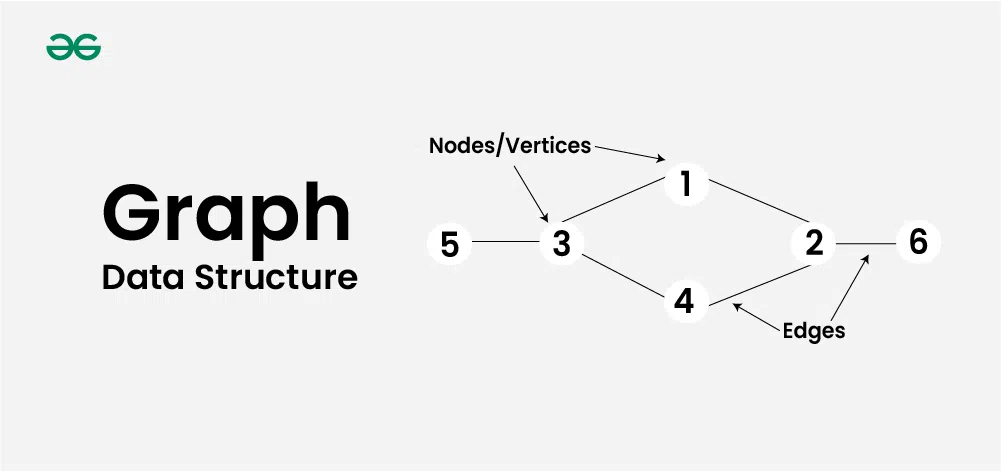图算法在Python中的精讲:深度与广度优先搜索原理及应用
发布时间: 2024-09-09 20:20:24 阅读量: 146 订阅数: 48 


python基础编程:python实现树的深度优先遍历与广度优先遍历详解

# 1. 图算法基础
图作为计算机科学中的一种基础数据结构,广泛应用于解决实际问题。它由一系列节点(或称为顶点)和连接这些节点的边组成。理解图算法的基本概念,是掌握更高级算法如深度优先搜索(DFS)和广度优先搜索(BFS)的前提。
## 1.1 图的基本概念
图可以是无向的,也可以是有向的,根据边的特性可进一步分类为加权或非加权图。无向图中,节点间的连接是双向的;有向图中,边则具有方向性,连接从一个节点指向另一个节点。
在图论中,路径是指一系列顶点和连接它们的边。如果一个顶点序列中每对相邻顶点之间都存在边,则称这个序列是一个简单路径。环是路径的一种特殊情况,其起点和终点是同一个顶点。
## 1.2 图的表示方法
图可以通过多种方式表示,常见的有邻接矩阵和邻接表:
- 邻接矩阵是一个二维数组,每行每列分别代表一个顶点,其元素表示顶点之间的连接关系(有连接则为1,无连接则为0)。
- 邻接表是一个数组和链表的组合,每个索引位置对应一个顶点,其链表存储了所有与该顶点直接相连的顶点。
在实际应用中,选择哪种表示方法取决于图的大小和图的稀疏程度。
通过下一章节的深度优先搜索(DFS)和广度优先搜索(BFS),我们将深入探讨图的遍历和搜索策略。
# 2. 深度优先搜索(DFS)理论与实现
## 2.1 深度优先搜索的基本概念
### 2.1.1 图的遍历与搜索
在深入探讨深度优先搜索(DFS)算法之前,我们需要了解图遍历的基本概念。图是一种数据结构,由一组顶点(nodes)以及连接这些顶点的边(edges)组成。在计算机科学中,图用于表示复杂的网络关系,如社交网络、网页链接、运输网络等。
图的搜索算法主要任务是访问图中的每一个顶点,确保每个顶点仅被访问一次。图搜索算法分为两大类:深度优先搜索(DFS)和广度优先搜索(BFS)。DFS 从初始顶点开始,探索尽可能远离初始顶点的分支,直到该分支的末端,然后回溯并探索其他分支。
### 2.1.2 深度优先搜索的工作原理
深度优先搜索通过递归或栈的数据结构来实现。在DFS中,算法会尽可能沿着图的分支深入,直到达到最深的节点,然后开始回溯。每次访问一个新的节点时,DFS会检查该节点的所有未访问的邻居,并对其中一个邻居进行递归调用。
使用递归实现DFS时,算法将从一个初始节点开始,并且每遇到一个新节点,就将其相邻的未访问节点放入递归调用堆栈。非递归实现则使用显式的栈来保存将要访问的节点。
## 2.2 深度优先搜索的算法实现
### 2.2.1 递归实现DFS
以下是使用Python编写的DFS递归实现的一个简单例子:
```python
# 假设图以邻接表形式存储,graph是一个字典,键是节点,值是相邻节点的列表。
graph = {
'A': ['B', 'C'],
'B': ['D', 'E'],
'C': ['F'],
'D': [],
'E': ['F'],
'F': []
}
# 使用全局变量来跟踪访问过的节点
visited = set()
def dfs(visited, graph, node): # 传入已访问节点集合、图、当前节点
if node not in visited:
print(node)
visited.add(node)
for neighbour in graph[node]:
dfs(visited, graph, neighbour)
# 调用函数
dfs(visited, graph, 'A')
```
这段代码将输出从节点 'A' 开始的DFS遍历序列。
### 2.2.2 非递归实现DFS与栈的使用
使用显式栈的DFS实现与递归实现类似,但避免了函数调用的开销。以下是使用栈实现DFS的Python代码示例:
```python
def dfs_iterative(graph, start):
visited = set()
stack = [start]
while stack:
vertex = stack.pop() # 弹出栈顶元素
if vertex not in visited:
print(vertex)
visited.add(vertex)
stack.extend(reversed(graph[vertex])) # 将邻居添加到栈中,反转列表以保持遍历顺序
# 调用函数
dfs_iterative(graph, 'A')
```
这段代码同样会输出从节点 'A' 开始的DFS遍历序列。
## 2.3 深度优先搜索的应用案例
### 2.3.1 拓扑排序
拓扑排序是深度优先搜索在有向无环图(DAG)上的一个应用。它将有向图的顶点排成一个线性序列,使得对于每一条有向边(u, v),顶点u都排在v之前。
拓扑排序不是唯一的,但在DFS遍历结束时,我们可以通过将顶点添加到列表中来得到一个有效的拓扑排序。以下是一个拓扑排序的DFS实现:
```python
def topological_sort(graph):
visited = set()
stack = []
def dfs(node):
visited.add(node)
for neighbour in graph[node]:
if neighbour not in visited:
dfs(neighbour)
stack.insert(0, node) # 将节点插入到栈顶
for node in graph:
if node not in visited:
dfs(node)
return stack # 返回拓扑排序
# 示例图
graph = {
'A': ['B', 'D'],
'B': ['C'],
'C': [],
'D': ['C']
}
print(topological_sort(graph))
```
### 2.3.2 检测图中的环
深度优先搜索也常被用来检测有向图中是否存在环。如果在DFS过程中,我们遇到一个已经访问过的节点,且该节点不是当前节点的直接后继节点,那么这个图中就存在一个环。
以下是使用DFS检测图中环的Python代码示例:
```python
def has_cycle(graph):
visited = set()
rec_stack = set()
def is_cyclic_util(node, parent):
visited.add(node)
rec_stack.add(node)
# 递归访问所有邻居
for neighbour in graph[node]:
if neighbour not in visited:
if is_cyclic_util(neighbour, node):
return True
elif neighbour != parent:
return True
rec_stack.remove(node)
return False
for node in graph:
if node not in visited:
if is_cyclic_util(node, -1):
return True
return False
# 示例图,包含一个环
graph = {
'A': ['B', 'C'],
'B': ['D'],
'C': ['B'],
'D': ['C']
}
print(has_cycle(graph)) # 输出结果将是True,表明存在环
```
通过这些应用案例,我们可以看到深度优先搜索不仅是一种强大的搜索策略,它还在许多图算法中扮演着核心角色。
# 3. 广度优先搜索(BFS)理论与实现
## 3.1 广度优先搜索的基本概念
### 3.1.1 队列与层次遍历
在深入广度优先搜索(BFS)的实现之前,理解队列数据结构的重要性是关键。队列是一种先进先出(FIFO)的数据结构,它在BFS中的应用是维持访问节点的顺序,确保我们能够按照距离起始点的层次进行遍历。
图论中的节点可以被想象为一个城市的各个地点,而边则可以视作连接这些地点的道路。在使用BFS遍历一个图时,我们从起始节点开始,首先访问所有与起始节点相邻的节点。这就像从城市的一个地点出发,首先访问所有步行可达的其他地点。接下来,我们再访问这些新节点的相邻节点,但要排除已经在之前步骤中访问过的节点。这一步骤不断重复,直到访问完图中所有可达的节点。
队列在这一过程中扮演了核心角色。我们将刚访问的节点放入队列中,并在每一层遍历完成后,从队列中取出一个节点,再将其所有未访问过的相邻节点加入队列。这样,我们就能保证访问顺序的正确性,按照从近到远的顺序逐层推进。
### 3.1.2 广度优先搜索的工作原理
BFS的原理是基于上述的层次遍历,通过逐步扩展搜索范围,直至覆盖整个图或找到目标节点。与深度优先搜索(DFS)不同,BFS不深入一条路径,而是尝试探索所有可能的路径。
在BFS中,我们使用一个队列来维护待访问节点的列表。算法开始时,仅将起始节点加入队列。在每一步中,我们从队列中取出队首元素,访问它,并将其所有未访问的邻居节点加入队列。这一过程重复进行,直到队列为空,此时所有可达节点都已被访问。
为了防止重复访问同一个节点,我们通常使用一个标记数组(或集合)来记录哪些节点已经被访问过。当一个节点被取出队列并访问后,我们将它加入到已访问集合中。这样,即使之后的节点再次被发现,我们也能通过检查已访问集合,避免重复处理。
在BFS中,一旦发现目标节点,搜索过程立即停止,这确保了在最短路径问题中,我们能够找到距离起始节点最近的目标节点。
## 3.2 广度优先搜索的算法实现
### 3.2.1 使用队列实现BFS
实现BFS算法的关键在于合理使用队列数据结构。下面是一个使用Python实现BFS算法的基本示例:
```python
from collections import deque
de
```
0
0





